Pennsylvania’s Pine Creek Rail Trail
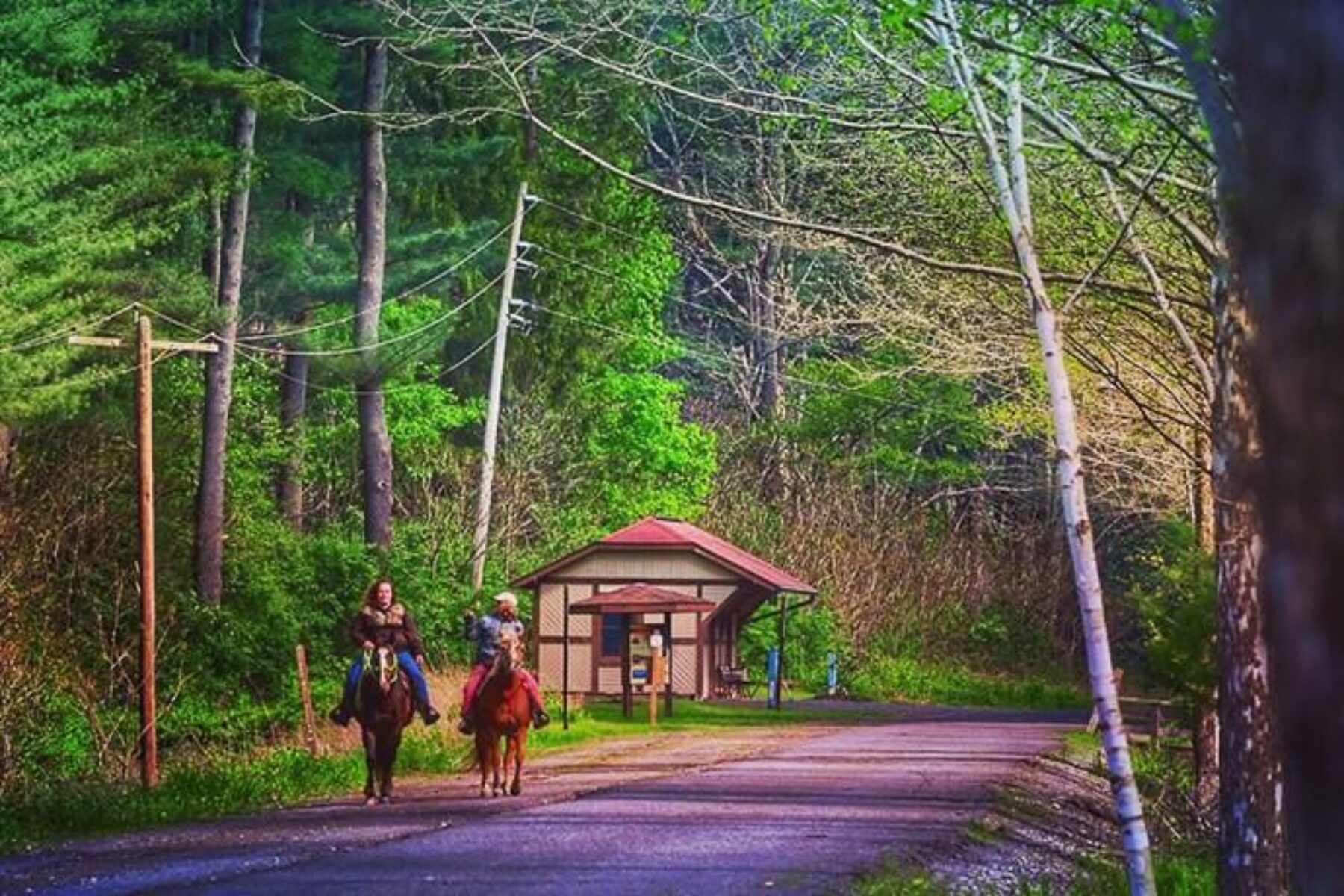
Trail of the Month: September 2016
“I travel all around the state and the Mid-Atlantic region, and there’s nothing like this any place.”
We’re going to let you in on a little secret: If you’re looking for a trail trip to take this fall, stop your Google searching; northern Pennsylvania’s Pine Creek Rail Trail offers the perfect outdoor destination for autumn (or any season, really). Stretching 62 miles through a pristine valley dubbed the Grand Canyon of Pennsylvania, the variety of trees here—sugar maple, red maple, ash, oak, white pine and hemlock—form an ever-changing kaleidoscope of landscapes. In this lush wilderness, travelers will often cross paths with deer or, much less frequently, black bears.
“It strikes me every time how special this area is and how lucky we are,” says Lori Copp, executive director for the Tioga County Visitors Bureau, who works just 2 miles from the trail’s Darling Run trailhead. “I take people on tours of the trail and they’re just like, ‘I can’t even believe this is here.’ I travel all around the state and the Mid-Atlantic region, and there’s nothing like this any place.”
Remote Beauty and Welcoming Towns
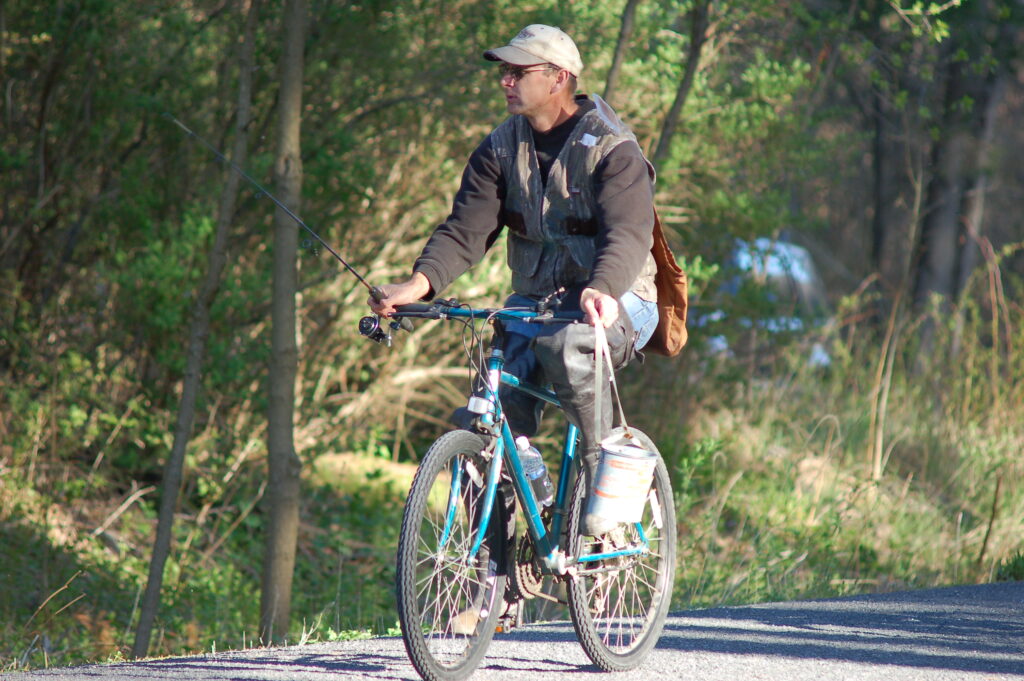
The pathway’s finely crushed stone surface is hard packed and well maintained by the Pennsylvania Department of Conservation and Natural Resources (DCNR) for a smooth ride with a barely imperceptible slope downhill from north to south. Although sections of the trail are very remote, restrooms and other amenities dot the route every few miles, and there are numerous villages along the way that offer lodging and restaurants, keeping the experience comfortable and logistically easy.
Pine Creek accompanies the trail for almost the entire length from Wellsboro Junction to Jersey Shore. Eagles and ospreys are commonly spotted in the high trees nearby, and heron often wade along the shoreline. Although somewhat elusive, river otters—which were reintroduced to the area in the 1980s—can also sometimes be seen gliding through the water. In the spring, snowmelt fills the creek, bringing the opportunity to explore the canyon by paddle as well as pedal, especially between the villages of Ansonia and Blackwell. In the summer, swimming, fishing and float trips are popular pastimes.
“We used to be pretty seasonal,” says Jonathan Dillon, owner of Pine Creek Outfitters, which offers bike rentals and shuttle service along the trail. “But after the rail-trail was put in, we were busy year-round.”
Tom Sexton, RTC’s northeast regional director, echoes that sentiment, “The Pine Creek Rail Trail is a good economic generator for the area. It’s increased property values, but it hasn’t pushed people out. The campgrounds and restaurants and B&Bs that are along the trail are in keeping with the community and the landscape.”
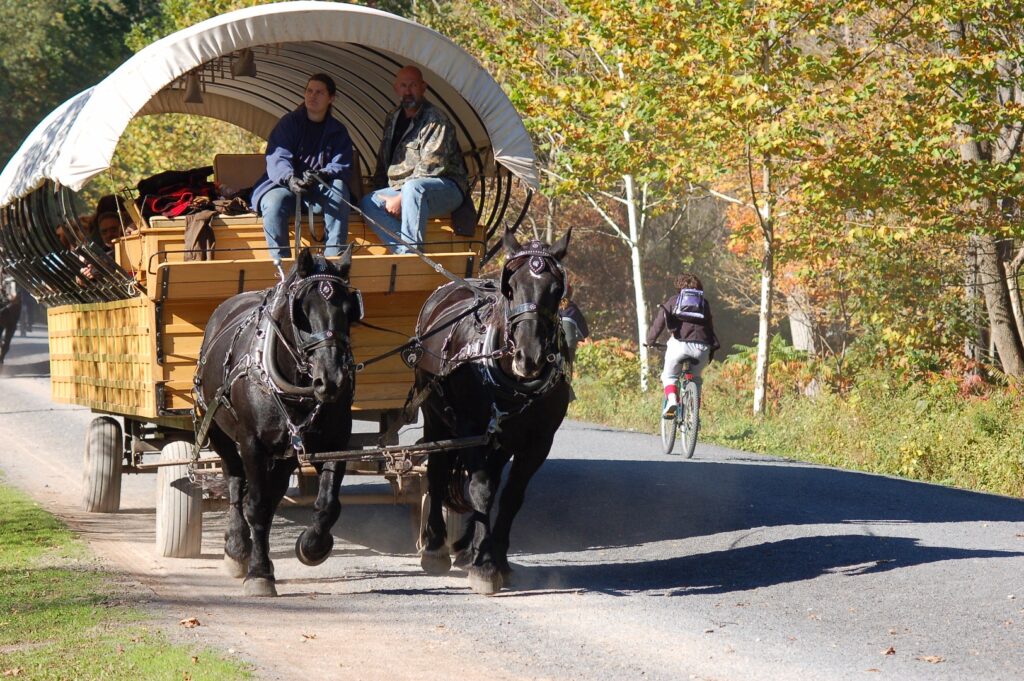
One of Dillon’s favorite things about the trail is that it provides access to the many hiking trails that crisscross the surrounding state parks and state forests, yielding tucked-away treasures like crystalline waterfalls and breathtaking overlooks of the canyon. In addition to biking, hiking and use of the creek, the area has seemingly endless options for recreational activities, including rock climbing, horseback riding (an equestrian pathway parallels the rail-trail between Ansonia and Tiadaghton) and even horse-drawn covered wagon rides.
For railroad buffs, a station for the Tioga Central Railroad, which offers seasonal excursion rides to Lake Hammond and the outskirts of Corning, New York, lies across the street from the northern terminus of the rail-trail. Those active tracks head north from Wellsboro Junction, while the tracks heading south from the town—originally opened by the Jersey Shore, Pine Creek, and Buffalo Railway in 1883—were removed and became the rail-trail. Train operators changed hands a few times over the years until trains stopped running on the line in 1988. A few of the old stone mile makers from its railroad heyday still appear along the trail, and interpretive panels about the region’s railroad and logging history can be found at the Darling Run and Tiadaghton trailheads.
Though the trail ends just 3 miles from downtown Wellsboro, the idea to link the town directly to the Pine Creek Rail Trail via a trail connector was considered a “pie in the sky” dream 12 years ago, according to Tioga County planner Jim Weaver. Recently awarded federal funding for the project has reenergized the idea, and the connector—called the Marsh Creek Greenway—is moving forward at a quickening pace.
“We have close to a million dollars now to do the preliminary engineering and final design,” says Weaver of the greenway project. “And any remaining funding can be applied toward construction.”
From Controversy to Reality
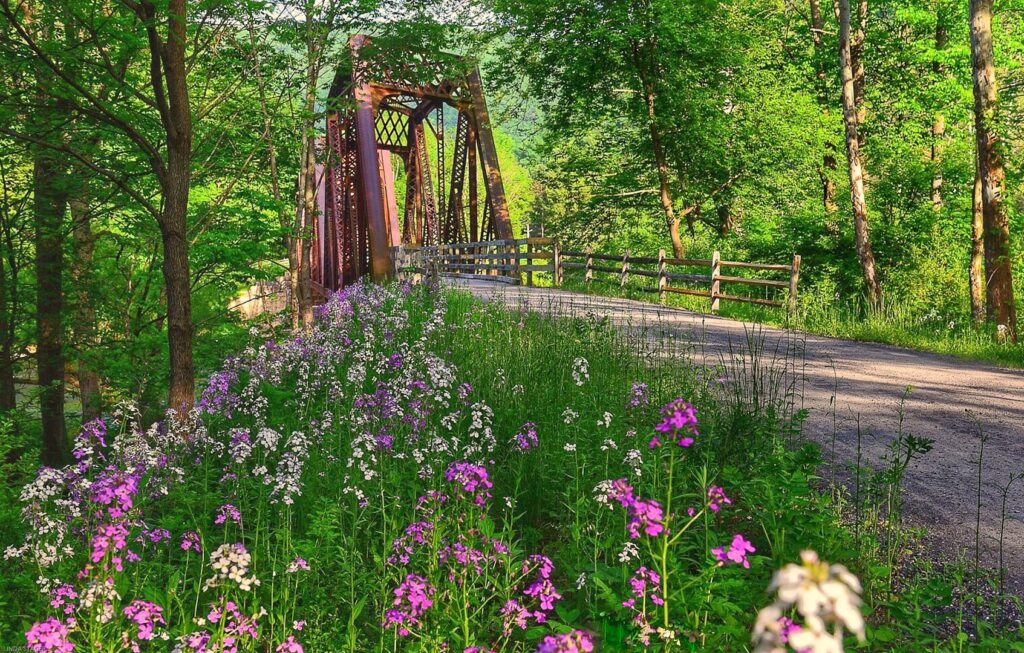
The construction of the Pine Creek Rail Trail itself was not without its own difficulties. Many of the adjacent landowners felt that the corridor should revert back to private ownership once the trains stopped running, but the corridor was railbanked for interim trail use to be converted back to railroad use should the need arise.
“The trail was pretty controversial when it was first proposed,” says Weaver, who assisted the DCNR in addressing the concerns of landowners opposed to the project. “Some people didn’t want the trail built in Lycoming County. There was a big push to derail it.”
A turning point came when former state representative Tom Murphy (and later Pittsburgh mayor) led the charge for the passage of the Pennsylvania Rail Trail Act in 1989. The legislation established the DCNR program for purchasing former railroad rights-of-way for trails.
“The Pine Creek Trail was in the balance,” says Murphy of the nail-biting vote to pass Senate Bill 967. “Late at night, the Pennsylvania legislature was voting on a bill to permit the Commonwealth of Pennsylvania to purchase the 62-mile abandoned rail corridor; all of the legislators from the area were opposing the creation of the trail outside of the [state] park. They introduced an amendment to the legislation to permit the purchase of only 16 miles of the 62-mile corridor. The amendment failed on a tie vote! It is because of that vote that we enjoy the entire trail today.”
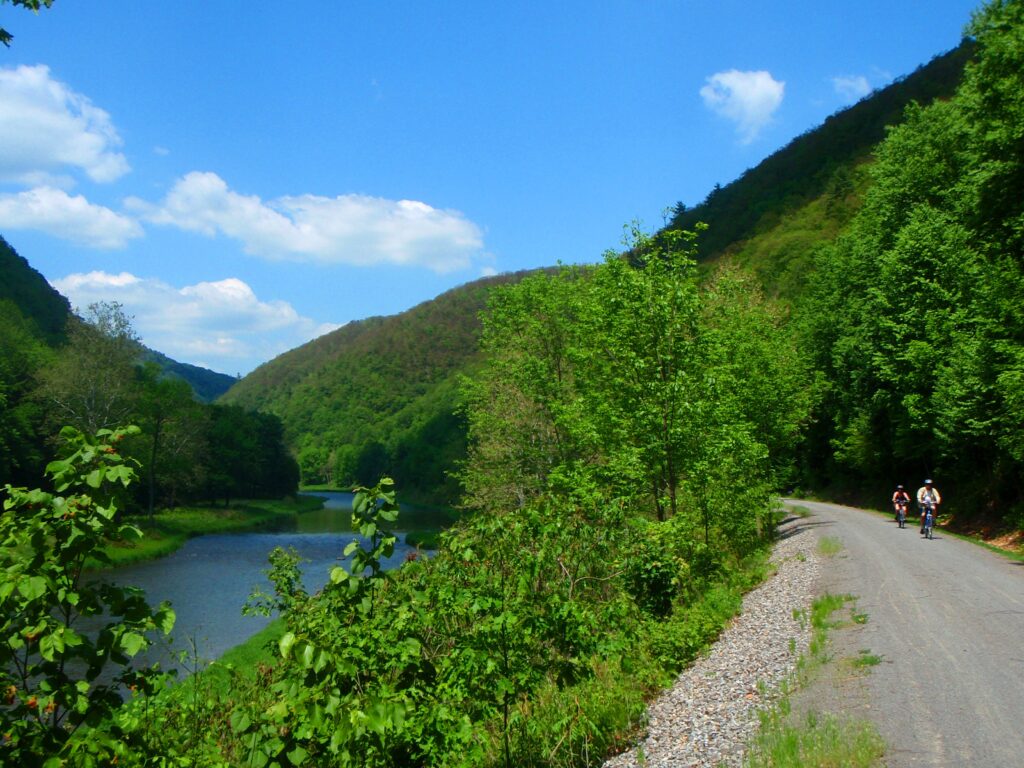
Murphy, who was named a Doppelt Family Rail-Trail Champion in part for his Herculean efforts to pass such key rail-trail legislation, adds, “The rail-trail effort is the most remarkable grassroots effort that I’ve ever seen. Across the country, it was like flowers blooming. Everyone had the same idea to keep the railroad rights-of-way for recreational opportunities.”
With the political battle won, the Pine Creek Rail Trail’s first section, the 19-mile stretch between Ansonia and Blackwell, opened in 1996. Additional segments opened in a steady procession every few years afterwards with the last section completed in 2007.
After two decades of use, the well-loved rail-trail has become a model for success, bringing in an estimated $5 million annually to the local economy. “I can see the interest growing in the trail every year,” says Copp. “People’s eyes light up when you talk about it. When you show them the pictures, they’re in.”
Special thanks to Linda Stager, author of The Pine Creek Rail-Trail Guidebook, for sharing her photography and invaluable trail knowledge for this story.
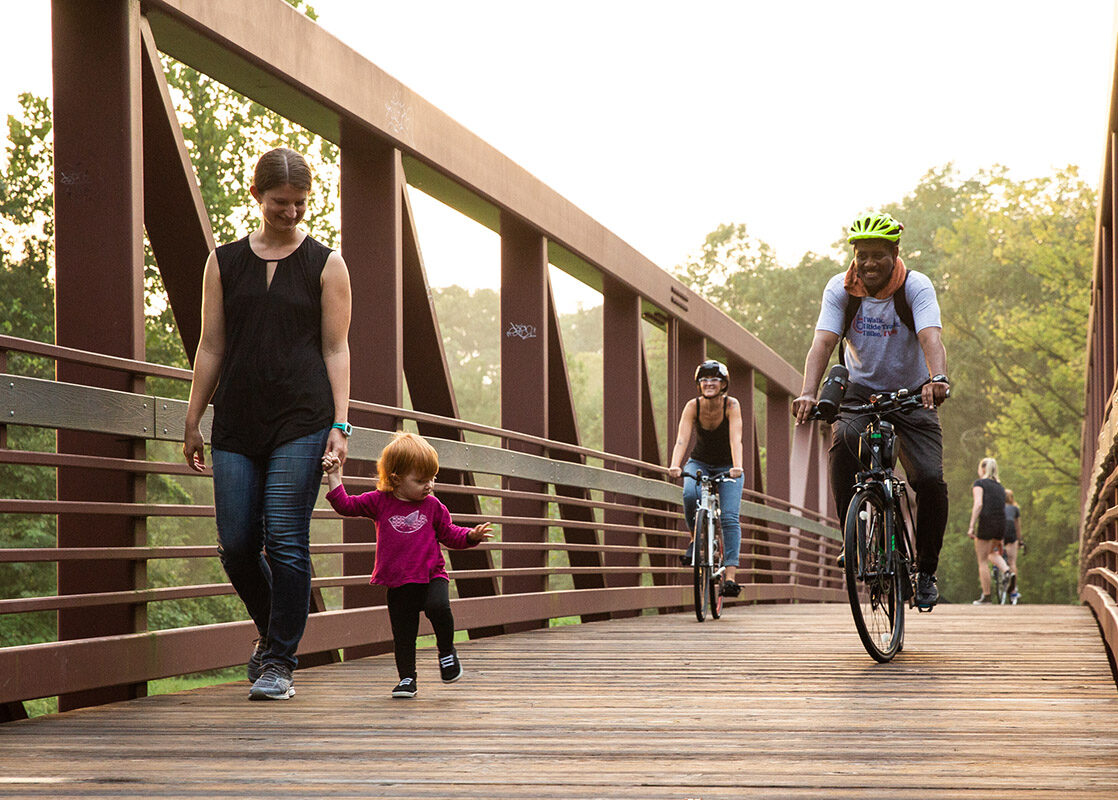
Donate
Everyone deserves access to safe ways to walk, bike, and be active outdoors.